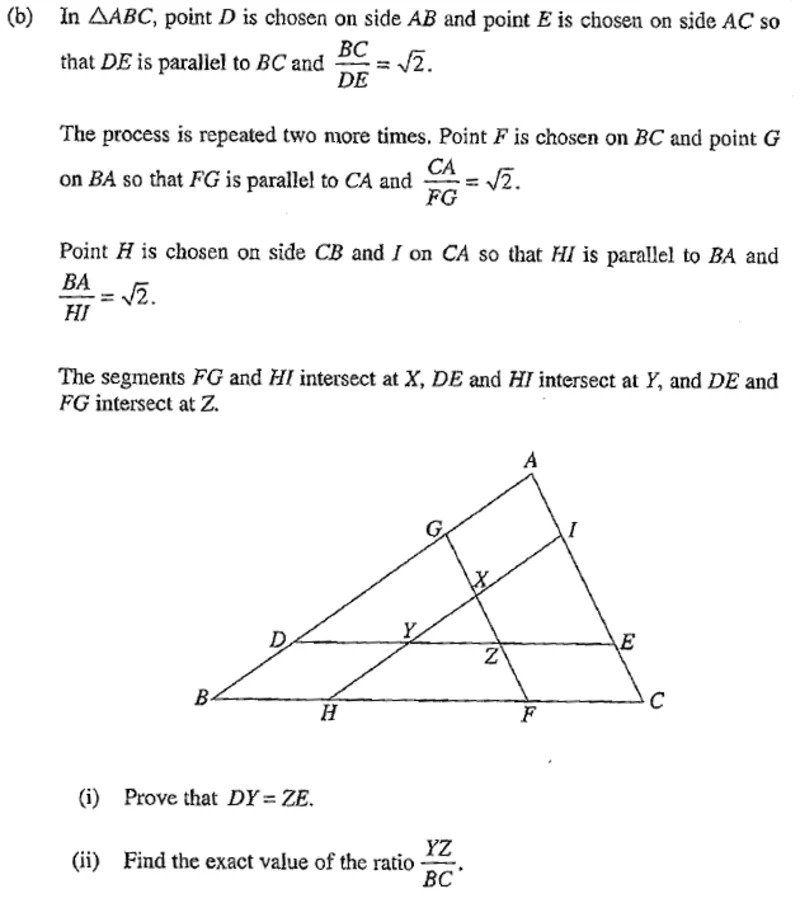How will you prove the below identities for the triangle in attached image ?
Triangles ICH and ACB are similar and triangles ADE and ABC are also similar using AAA test for similarity. Similarly GBF and ABC are also similar
Given that and also from property of similar triangles BF GF 1 __ = ___ = ____ ------------------------------------(1) BC AC √2
also given and from property of similar triangles HC IH 1 ___ = ___ = ___ --------------------------------------(2) BC AB √2 From (1) & (2) BF HC __ = ___ => BF = HC = >(BH+HF) = (HF+FC) => BH = FC -----------------------------(a) BC BC But BH = DY (opposite sites of parallelogram DYHB) and FC = ZE (opposite sides of parallelogram ZECF) ----------- (b) From (a) and (b) => DY = ZE
To prove the second part we consider
DE = DY + YZ + ZE but DY = ZE = x
=> DE = 2x + YZ -------------- (A)
1 1
Given DE = _____BC => 2x + YZ = ___BC
√2 √2
2x + YZ 1
=> ___________ = ___ ----------------------------------------(c)
BC √2
From equation (2) above HC 1 HF+FC 1 __ = ___ => ______ = ___ ---------------------------(d) BC √2 BC √2 As FC = ZE = x (opposite sides of a parallelogram ZECF) -----------(e)
From equations (d) and (e) HF + x 1 _______ = ____ and from equations (c) & (d) we get 2x + YZ = HF + x BC √2 => HF = x + YZ -------------------(f)
Also HF = BC - (BH + FC) and we proved BH = FC = x => HF = BC - 2x => HF + 2x = BC ------(g) Substituting the value of HF in equation (g) from equation (f) x + YZ + 2x = BC => BC = YZ + 3x ----------------------(B)
Proved already DE = 2x + YZ in equation (A) above and given that DE 1 2x+YZ 1 ___ = ___ => _______ = ____ => 2√2x + √2YZ = YZ+3x BC √2 YZ + 3x √2
=> (2√2-3)x = (1-√2)YZ
(2√2-3)x (√2 - 1)YZ
=> YZ = _________ => x = _____________
1-√2 3 - 2√2
But since BC = YZ + 3x , substituting the value of x in this equation
BC = YZ + 3(√2 - 1)YZ 3(√2 - 1)
_____________ => BC = YZ (1 + ___________)
3 - 2√2 3 - 2√2
YZ 1 3 - 2√2 3 - 2√2
__ = ____________________________ = __________________ = ________
BC 1 + 3(√2 - 1) 3 - 2√2+ 3√2 - 3 √2
_________
3 - 2√2
Rationalising the denominator by multiplying numerator and denominator by √2 YZ 3√2 - 4 ___ = ___________ BC 2
goli202084 Changed status to publish
